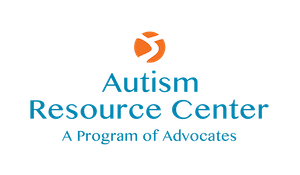September is National Emergency Preparedness Month, October is Fire Safety Month, and the Fall brings with it the possibility of hurricanes so it is a good time to ask ourselves are we really prepared. If hurricines are not enough to spur you into action “Winter is Coming “.
It is the perfect time to consider what an “emergency” means to you and your family. Emergency means different things to all of us. Webster’s defines emergency as a “sudden, unforeseen crisis that requires immediate action. Most of us cope with the day to day emergencies that autism brings, and take steps to control all the antecedents to avoid meltdowns but some things are out of our control.
The most common of all emergencies are medical, fire and household. Having a family emergency plan that meets the needs of your family can help you be better prepared to be successful in an emergency situation. The American Red Cross recommends that families have an emergency plan, assemble supplies, and have a grab and go bag, to be better prepared in case of an emergency. Check out resources at www.ready.gov.
The most common of all emergencies are medical, fire and household. Having a family emergency plan that meets the needs of your family can help you be better prepared to be successful in an emergency situation. The American Red Cross recommends that families have an emergency plan, assemble supplies, and have a grab and go bag, to be better prepared in case of an emergency. Check out resources at www.ready.gov.
Why the Family Emergency Plan? Planning ahead for the emergency makes us better prepared. The more we talk about these situations, plan for them and practice, the more likely we are to be successful in a situation that can be very challenging. A sample plan can be found at the Family Ties Site.
If there were a fire, do you have an escape route, does everyone know where to meet after exiting the building, are your local emergency responders aware that there is a child in your house with special needs? If not, registering your child information in the Disability Indicator Program is the next step. Once registered, a code will appear when a 911 call is received from your home, indicating there is someone in the home with a disability. The form can be downloaded from the State Emergency Telecommunications Board.
If there were a fire, do you have an escape route, does everyone know where to meet after exiting the building, are your local emergency responders aware that there is a child in your house with special needs? If not, registering your child information in the Disability Indicator Program is the next step. Once registered, a code will appear when a 911 call is received from your home, indicating there is someone in the home with a disability. The form can be downloaded from the State Emergency Telecommunications Board.
Have you talked about your plan with your family, have you practiced? These are just a few of the questions that should be considered when designing your plan. Your plan should include a meeting place in your neighborhood, should you have to leave your home. When forming your plan you should consider how your child with Autism would respond to an emergency. A sudden loss of power, loud noises, strangers, a quick transition to a new location, can all be very traumatic. Will you be able to help your child exit the home in an emergency if you are alone? If not, an alternative volunteer is something to be considered. Neighbors who would be willing to assist you are a great idea. Preparing your child is an important piece. Practice, practice, practice. You may be able to avoid some of the anxiety by helping your child be prepared.
Why the supplies? Being prepared is key. If you were to lose power for several days, you would need food, water, medication, battery powered flashlights, DVD player etc. A supply of water, canned foods, crackers, cereals, flashlight and batteries, and medication should all be considered. A list of things you should have can be found on the Federal Emergency Management Agency website. You should have emergency supplies both at home and in your vehicles. Even a flat tire can be considered an emergency if you are stranded for long periods of time with out the basics.
Why a grab and go bag? You should have all of your family’s information in one spot where it can be grabbed quickly. Consider the emergency call from school, a trip to the E.R. is inevitable, you’re upset and need to move quickly. Having all of your information together and available to grab and go can make the trip a little less stressful for everyone involved. All of your child’s medical information should be included in your bag. You can download the Emergency Information form for Children with Special Needs, by clicking here. You might also want to include in your bag-preferred items to help make your child feel more at ease and a change of clothing.
When all of these things are in place, you can be a little more at ease knowing that in case of an emergency, you are prepared and your family is prepared. Click here for a good comprehensive plan to be prepared




